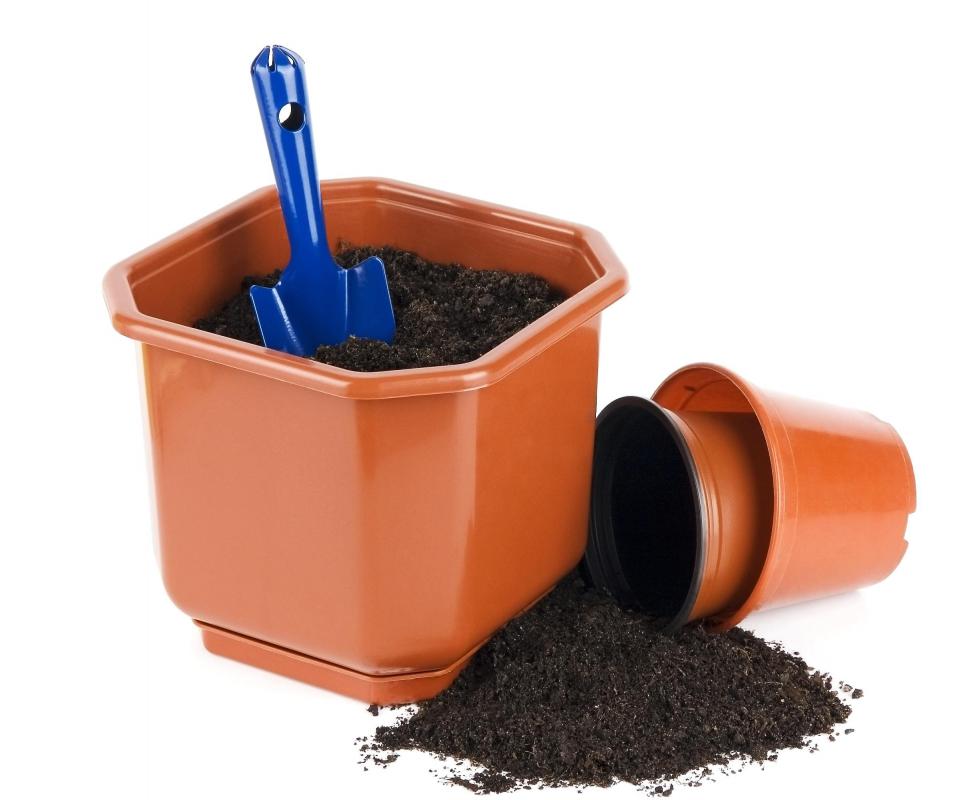At HomeQuestionsAnswered, we're committed to delivering accurate, trustworthy information. Our expert-authored content is rigorously fact-checked and sourced from credible authorities. Discover how we uphold the highest standards in providing you with reliable knowledge.
What is Rooting Hormone?
Rooting hormone is a compound that is used to stimulate a leaf, or stem cutting, to grow roots. Although it is possible to grow a plant successfully without using rooting hormones, using it increases the odds of growing a healthy plant. Rooting hormone is used when growing cuttings from garden plants or houseplants.
There are a variety of commercial rooting hormones available that are inexpensive and simple to use. The first step is to take a cutting from the plant that you wish to propagate. A leaf cutting is one leaf, removed at the very base where it extends out from the stem. A stem cutting is a small section of stem with two to three leaves attached.

If the rooting hormone is a powder, pour a small amount onto a dish. It is also necessary to have a small dish of water. Dip the base of the cutting in water so that the hormones will adhere, and then dip the base of the cutting into the rooting hormone. Gently tap off any excess, more is not better with rooting hormones.
The plant is ready to go into the dirt now. Plant the cutting in sterile potting soil and cover it with an overturned glass jar or a clear plastic bag. This will keep the cutting from wilting by holding in moisture, much like a terrarium. Place the cutting in an area where it will receive at least six hours of light each day, but out of direct sunlight. Covered in glass or plastic, it is easy for the plant to get too hot if it receives too much sun.

In about a month, new growth will start to form on the cutting. This is an indication that the plant has developed a root structure underneath the soil. While it is still important to protect the cutting, it is now possible to re-pot the plant or plant it outside.
The process for using a homemade rooting hormone is similar to using a commercially prepared one. The exception is that the step of dipping the cutting in water first can be bypassed, because most homemade mixtures will be liquid. Weeping willows contain a compound that makes an excellent rooting hormone. Soak either the young shoots of a weeping willow; they will have yellow tips, or pieces of the bark, in a container of water. After soaking for 24 hours, the water can be used as a rooting hormone.
Some people have success using honey as a rooting hormone. It is widely accepted that honey contains antibacterial as well as antifungal properties. The honey may allow the cutting to fend off attacks by bacteria and microbes in the soil while it develops roots, or, it may contain a property that acts as a rooting stimulate.
AS FEATURED ON:
AS FEATURED ON:












Discussion Comments
@Ana1234 - It's not rocket science either though. I find it's just a matter of making sure that you've got pretty good odds. Don't just take one cutting of anything, make sure you get several (although be respectful of the plant you are taking it from, of course).
My father used to stop on the road all the time and take cuttings from plants that he liked the look of and they did often grow well. But he was the kind of person who would encourage you to make your own rooting hormone and he didn't like commercial preparations at all. He used the willow water method described in the article.
@browncoat - There are quite a few different factors to getting a cutting to catch aside from using the best rooting hormone. You have to make sure you have healthy cuttings, taken from the right place, at the right time and set up to root in just the right way.
And even then you might not be successful. Some plants are just very difficult to grow from cuttings.
It's not just a matter of dipping any old twig into rooting hormone and hoping for the best. If that were the case then every twig and leaf that fell from a tree would become a new tree.
I've always found rooting hormone to be somewhat disappointing. I used to try and use it on rose plants and fruit tree twigs when I was a teenager in the hope that I could borrow a few things from my grandmother's garden to place in ours, but they never seemed to catch. I was probably doing something wrong though. I guess I expected the rooting hormone to be a magic bullet and it definitely isn't.
Post your comments